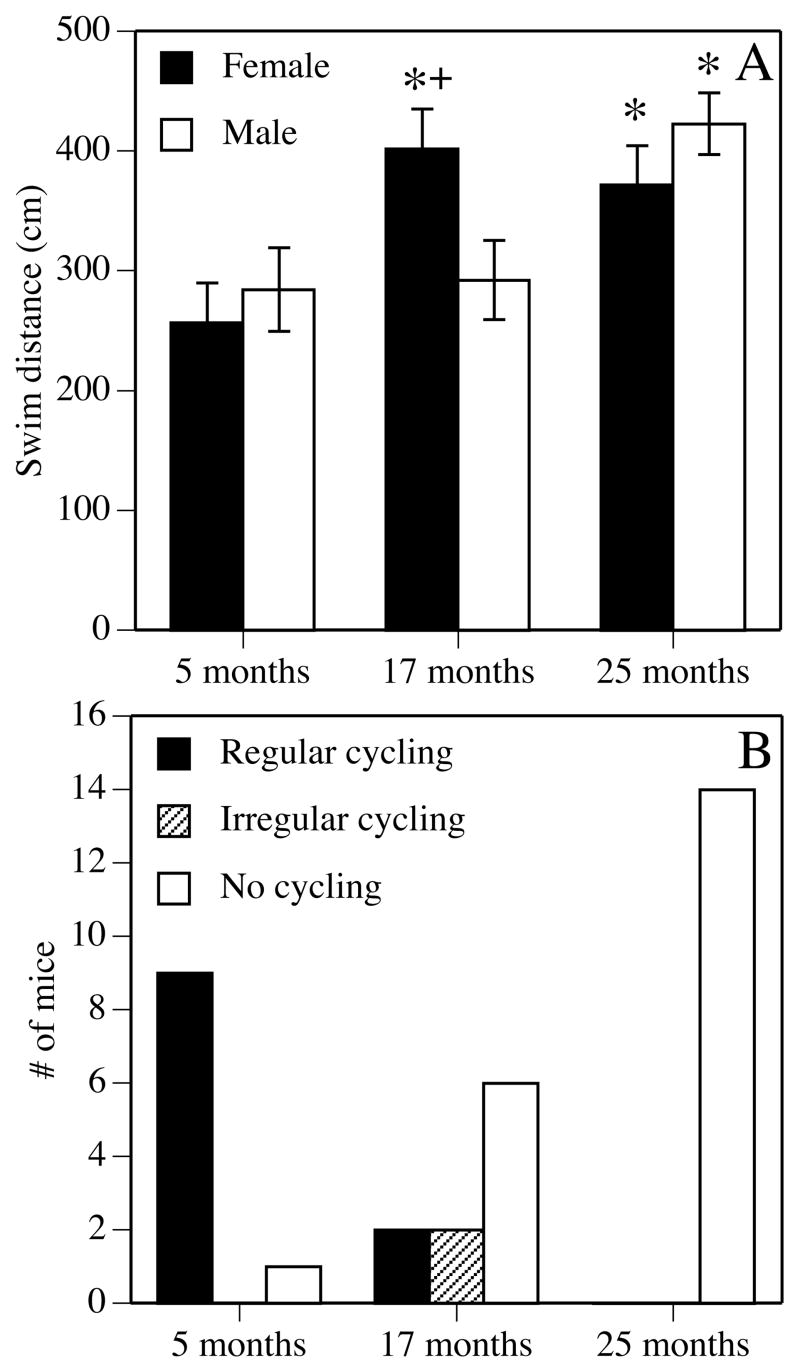Figure 1.

Effects of age on spatial reference memory in the Morris water maze (A) and estrous cycling (B). (A) Gonadally intact male and female mice were tested for 5 days in a spatial Morris water maze task at 5 (young), 17 (middle-aged), or 25 (aged) months of age. Each bar represents the mean ± standard error of the mean (SEM) swim distance for all 5 days of testing; lower numbers indicate better performance. Middle-aged and aged females were significantly impaired relative to young females, whereas only aged males were impaired relative to young males (*p < 0.05). Middle-aged females were also significantly impaired relative to middle-aged males (+p < 0.05). This pattern of data indicates that the onset of spatial reference memory decline in females occurs at an earlier age in females than in males. Adapted from (Frick et al., 2000; Frick et al., 2002a). (B) Estrous cycling was measured using daily vaginal lavage. The incidence of regular 4–5 day estrous cycles declined with age, such that no aged females were observed cycling regularly, whereas the number of mice failing to cycle increased with age. Irregular cycling, consisting of prolonged cycles, was observed among some middle-aged females. Adapted from (Frick et al., 2000).
